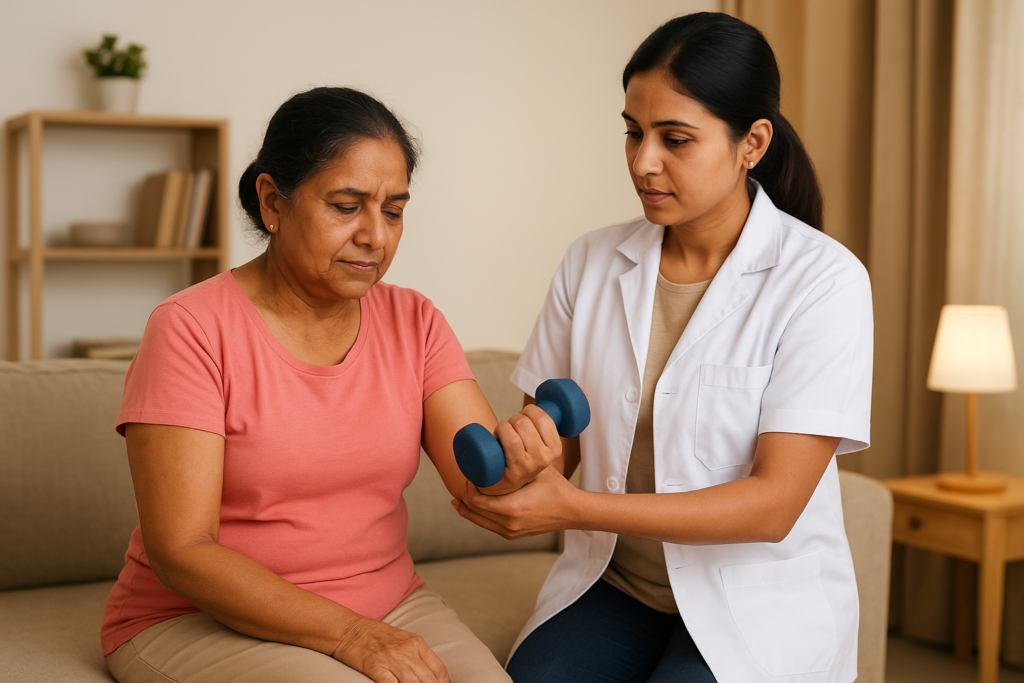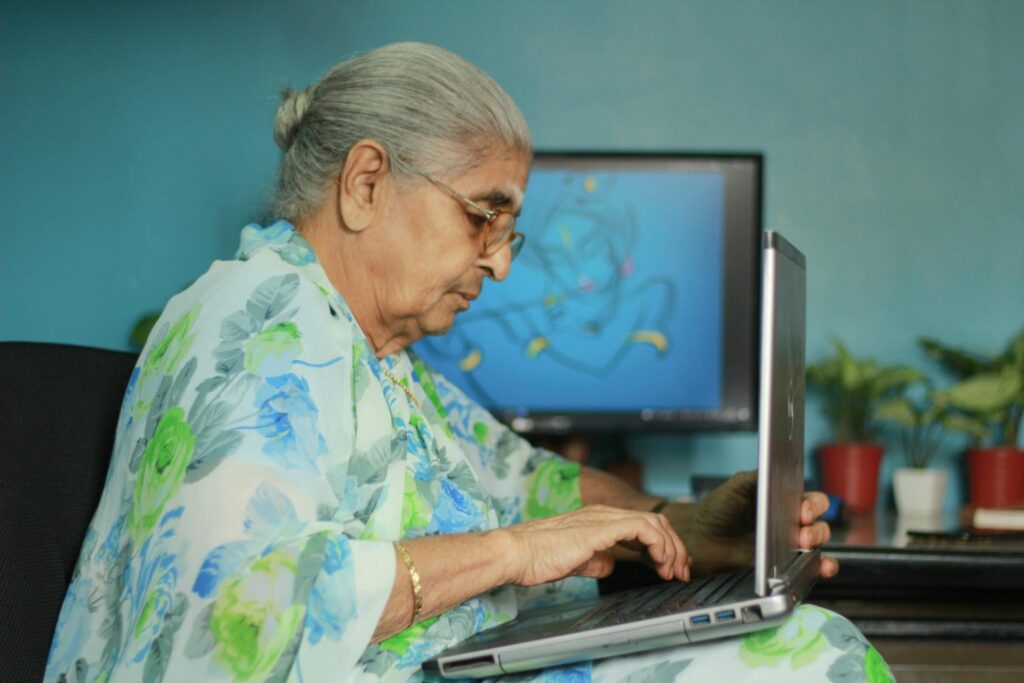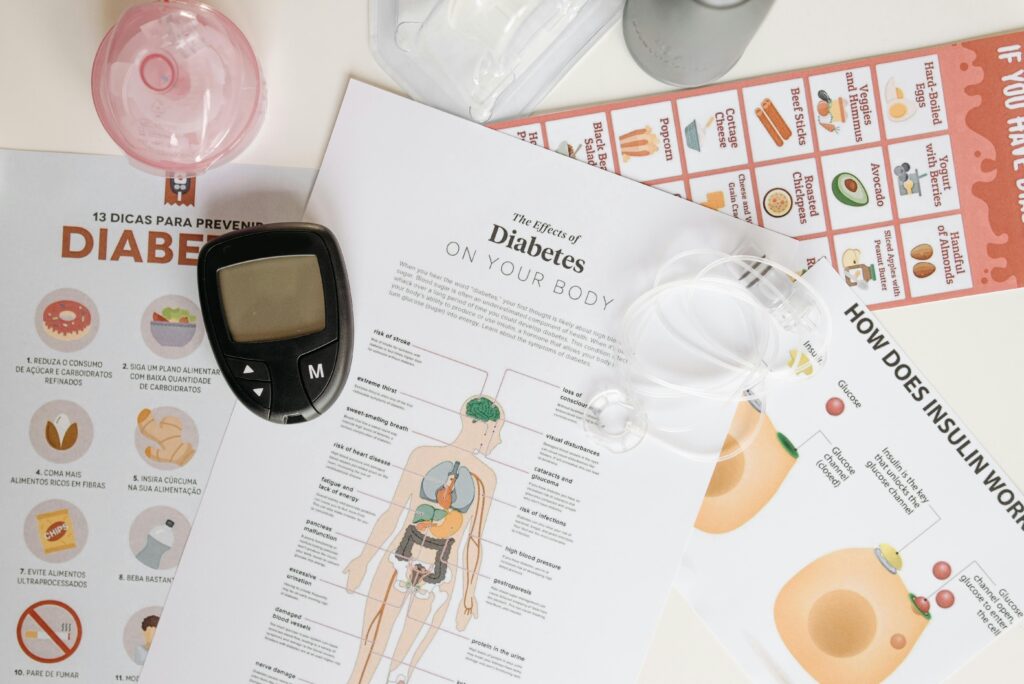As we grow older, movement becomes both a gift and a responsibility. Exercise keeps the body active. Physiotherapy helps the body heal and cope with specific problems. Both matter. But they are not the same. Knowing how they differ helps elders and caregivers choose what’s safest and most useful.
What is physiotherapy?
Physiotherapy (or physical therapy) is care given by a trained therapist. It is personalised. The therapist assesses strength, balance, joint movement, pain, and walking. They design exercises and techniques to reduce pain, restore movement, prevent complications, and improve function. Physiotherapy often includes hands-on therapy, guided exercises, posture correction, balance training, gait training, and education. It’s targeted to a medical problem or recovery goal.
What is regular exercise?
Regular exercise means daily movement routines you can do yourself. It includes walking, stretching, simple strength exercises using body weight, gentle yoga, chair exercises, and light household activities. Exercise keeps the heart healthy, improves mood, maintains strength, and supports balance. It is usually general and preventive rather than problem-specific.
Key differences — simple table in words
- Assessment: Physiotherapist assesses medically and measures progress. Regular exercise often starts without formal assessment.
- Personalisation: Physiotherapy is custom-made for a condition. Exercise routines are general and can be adapted.
- Goal: Physiotherapy treats and rehabilitates. Exercise maintains fitness and prevents decline.
- Supervision: Physiotherapy is guided by a professional. Exercise can be done independently or in groups.
- Techniques: Physiotherapy may use manual therapy, electrical stimulation, and special equipment. Exercise uses simple movements, walking, and light resistance.
When elders need physiotherapy first
Choose physiotherapy when there is:
- Recent surgery (hip, knee, spine) or after a fracture.
- A fall or new balance problem.
- Stroke, Parkinson’s disease, or other neurological conditions.
- Ongoing pain that limits daily activities (severe arthritis, persistent back pain).
- New weakness, loss of function, or walking difficulty.
- Need for a personalised safe-exercise plan due to multiple health conditions.
A physiotherapist helps set safe limits and gives exercises that avoid harm.
When regular exercise is enough
Regular exercise works well when the elder is:
- Generally stable and mobile, without new or severe pain.
- Healthy but wants to maintain strength, balance, and heart health.
- Looking to prevent falls and stay active.
- Able to follow simple, doctor-approved routines (walking, chair exercises, gentle yoga).
If in doubt, a quick consult with a physiotherapist or doctor before starting is wise.
How physiotherapy and exercise can work together
- Start with physiotherapy after an illness or injury to rebuild strength and movement.
- Once stable, continue with regular exercise to maintain gains.
- Physiotherapists can teach home exercises that become a daily routine.
- Periodic physiotherapy check-ins help progress and prevent relapse.
This combination gives both recovery and long-term health.
Safety first — practical tips for elders and caregivers
- Get a brief medical clearance before beginning any new activity.
- Start slow. Short sessions (10–20 minutes) multiple times a day are fine.
- Use stable chairs, non-slip footwear, and clear walking paths.
- Monitor for warning signs: chest pain, dizziness, sudden breathlessness, severe pain, fainting. Stop and seek help.
- Stay hydrated and avoid exercise immediately after a heavy meal.
- If the elder has memory or balance issues, supervise exercises or do them with a family member.
Simple, safe exercises elders can do daily
- Walking: Short walks, indoors or outdoors, broken into small sessions.
- Sit-to-stand: From a chair, stand up and sit down slowly 5–10 times. Builds leg strength.
- Ankle pumps and circles: Improve circulation and prevent stiffness.
- Seated marching: Lift knees alternately while seated. Good for balance.
- Wall push-ups: Gentle upper-body strengthening.
- Chair yoga or gentle stretches: Improve flexibility and relaxation.
Physiotherapists can adapt these to individual needs.
Role of the family and caregiver
- Encourage consistency and join in if possible. Shared walks and exercises motivate elders.
- Help with reminders for physiotherapy appointments and medicine.
- Learn safe transfer and mobility techniques from the therapist to avoid injuries.
- Celebrate small wins to boost confidence and mood.
Frequently asked questions (short answers)
Q: How long will physiotherapy take?
A: It depends on the condition. Some need a few sessions; others need months. The therapist will set goals.
Q: Can exercise replace physiotherapy after surgery?
A: Not usually. Surgery often needs targeted rehab first. After recovery, general exercise helps maintain progress.
Q: Is supervised group exercise useful?
A: Yes. Group classes for seniors build social support and safe routines. Choose groups led by trained instructors.
When to see a physiotherapist urgently
- Sudden severe pain or new weakness.
- Repeated falls.
- Difficulty walking or a rapid decline in mobility.
- New numbness, tingling, or loss of bladder/bowel control.
Early assessment helps prevent complications.
Conclusion — choose both when you can
Physiotherapy and regular exercise serve different but complementary roles. Physiotherapy heals and restores. Regular exercise keeps the body fit and independent. Together, they help elders move better, reduce pain, prevent falls, and enjoy life.
💬 We’d love to hear from you
Do you or your loved one do physiotherapy or follow a daily exercise routine? What helped you most? Tell us in the comments — your experience can help others.
📢 Found this useful? Please share with friends and family who care for elders.






